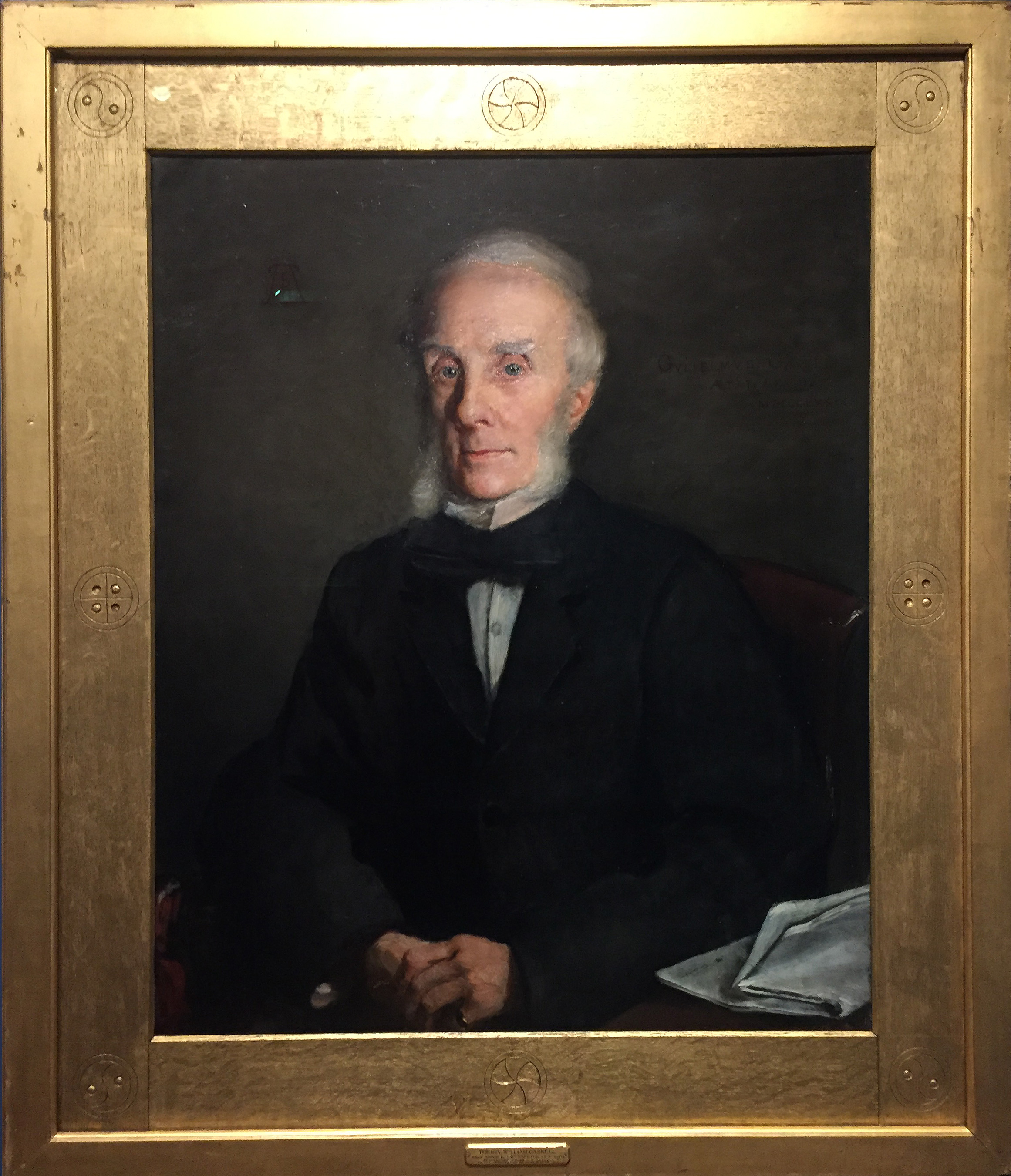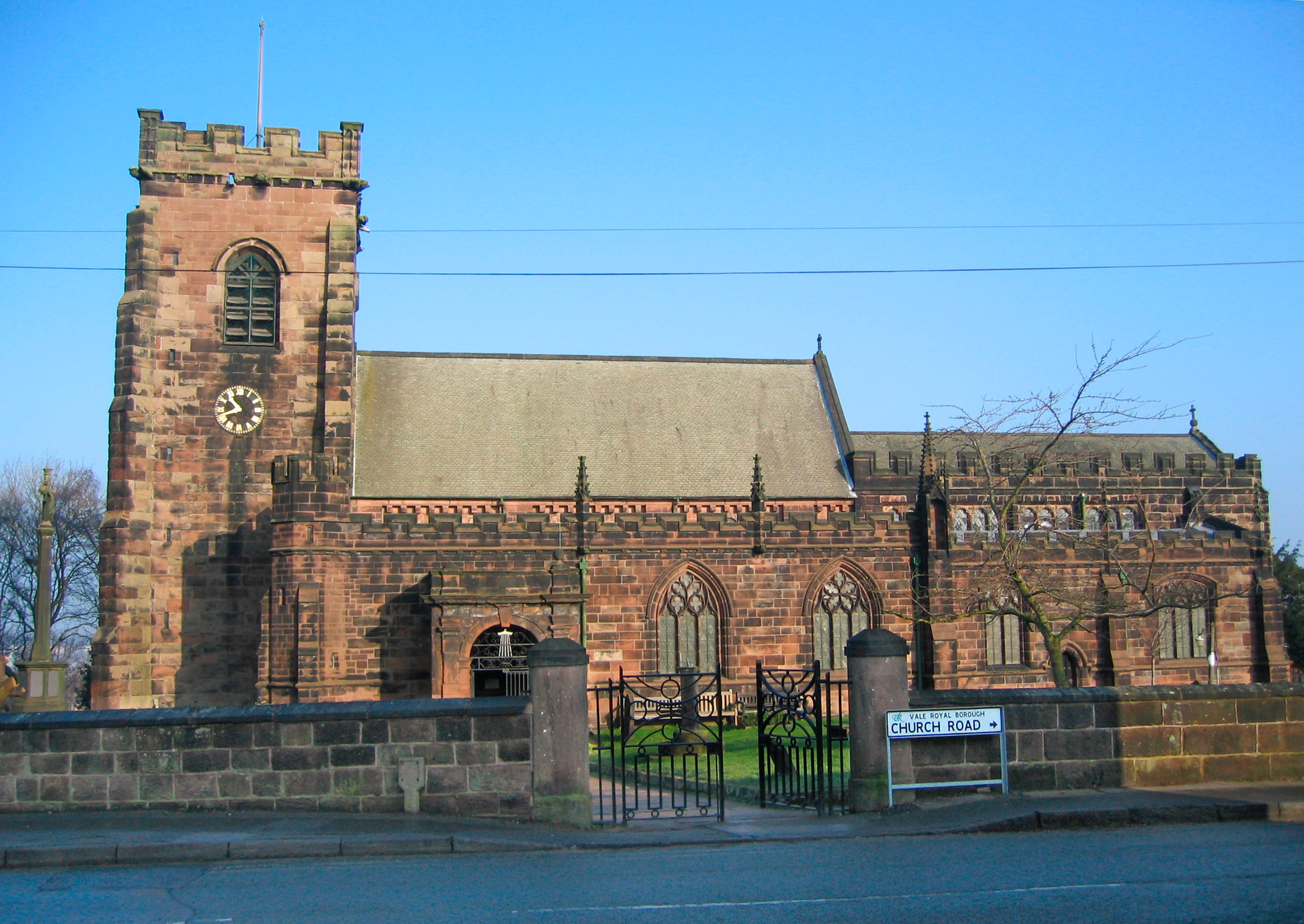|
Brook Street Chapel, Knutsford
Brook Street Chapel, is in the town of Knutsford, Cheshire, England. It is recorded in the National Heritage List for England as a designated Grade I listed building. The chapel was built in soon after the passing of the Act of Toleration 1689. It is built in red brick with a stone-flagged roof in two storeys with two external staircases. Inside is a gallery on three sides and a pulpit on a long wall. The pulpit dates from the late 17th or early 18th century and the pews from 1859. It is the burial place of the novelist Mrs Gaskell who died in 1865, her husband William Gaskell who died in 1884, and their two unmarried daughters who died in 1908 and 1913. It is still in use as a Unitarian chapel. See also * Grade I listed churches in Cheshire * Grade I listed buildings in Cheshire East *Listed buildings in Knutsford Knutsford is a market town in Cheshire East, England. Historically, its two main streets are Princess Street and King Street, which still conta ... [...More Info...] [...Related Items...] OR: [Wikipedia] [Google] [Baidu] |
Knutsford
Knutsford () is a market town in the borough of Cheshire East, in Cheshire, England. Knutsford is south-west of Manchester, north-west of Macclesfield and 12.5 miles (20 km) south-east of Warrington. The population at the 2011 Census was 13,191. Knutsford's main town centre streets, Princess Street (also known locally as Top Street) and King Street lower down (also known as Bottom Street), form the hub of the town. At one end of the narrow King Street is an entrance to Tatton Park. The Tatton estate was home to the Egerton family, and has given its name to Tatton (UK Parliament constituency), Tatton parliamentary constituency, which includes the neighbouring communities of Alderley Edge and Wilmslow. Knutsford is near Cheshire's Golden Triangle (Cheshire), Golden Triangle, and on the Cheshire Plain between the Peak District to the east and the Welsh mountains to the west. Residents include ''Coronation Street'' actress Barbara Knox and footballers Peter Crouch, Sam Ricke ... [...More Info...] [...Related Items...] OR: [Wikipedia] [Google] [Baidu] |
Cheshire
Cheshire ( ) is a ceremonial and historic county in North West England, bordered by Wales to the west, Merseyside and Greater Manchester to the north, Derbyshire to the east, and Staffordshire and Shropshire to the south. Cheshire's county town is the cathedral city of Chester, while its largest town by population is Warrington. Other towns in the county include Alsager, Congleton, Crewe, Ellesmere Port, Frodsham, Knutsford, Macclesfield, Middlewich, Nantwich, Neston, Northwich, Poynton, Runcorn, Sandbach, Widnes, Wilmslow, and Winsford. Cheshire is split into the administrative districts of Cheshire West and Chester, Cheshire East, Halton, and Warrington. The county covers and has a population of around 1.1 million as of 2021. It is mostly rural, with a number of towns and villages supporting the agricultural and chemical industries; it is primarily known for producing chemicals, Cheshire cheese, salt, and silk. It has also had an impact on popular cult ... [...More Info...] [...Related Items...] OR: [Wikipedia] [Google] [Baidu] |
Unitarianism
Unitarianism (from Latin ''unitas'' "unity, oneness", from ''unus'' "one") is a nontrinitarian branch of Christian theology. Most other branches of Christianity and the major Churches accept the doctrine of the Trinity which states that there is one God who exists in three coequal, coeternal, consubstantial divine persons: God the Father, God the Son ( Jesus Christ) and God the Holy Spirit. Unitarian Christians believe that Jesus was inspired by God in his moral teachings and that he is a savior, but not God himself. Unitarianism was established in order to restore " primitive Christianity before hat Unitarians saw aslater corruptions setting in"; Unitarians generally reject the doctrine of original sin. The churchmanship of Unitarianism may include liberal denominations or Unitarian Christian denominations that are more conservative, with the latter being known as biblical Unitarians. The movement is proximate to the radical reformation, beginning almost simultane ... [...More Info...] [...Related Items...] OR: [Wikipedia] [Google] [Baidu] |
Chapel
A chapel is a Christian place of prayer and worship that is usually relatively small. The term has several meanings. Firstly, smaller spaces inside a church that have their own altar are often called chapels; the Lady chapel is a common type of these. Secondly, a chapel is a place of worship, sometimes non-denominational, that is part of a building or complex with some other main purpose, such as a school, college, hospital, palace or large aristocratic house, castle, barracks, prison, funeral home, cemetery, airport, or a military or commercial ship. Thirdly, chapels are small places of worship, built as satellite sites by a church or monastery, for example in remote areas; these are often called a chapel of ease. A feature of all these types is that often no clergy were permanently resident or specifically attached to the chapel. Finally, for historical reasons, ''chapel'' is also often the term used by independent or nonconformist denominations for their places of wor ... [...More Info...] [...Related Items...] OR: [Wikipedia] [Google] [Baidu] |
National Heritage List For England
The National Heritage List for England (NHLE) is England's official database of protected heritage assets. It includes details of all English listed buildings, scheduled monuments, register of historic parks and gardens, protected shipwrecks, and registered battlefields. It is maintained by Historic England, a government body, and brings together these different designations as a single resource even though they vary in the type of legal protection afforded to them. Although not designated by Historic England, World Heritage Sites also appear on the NHLE; conservation areas do not appear since they are designated by the relevant local planning authority. The passage of the Ancient Monuments Protection Act 1882 established the first part of what the list is today, by granting protection to 50 prehistoric monuments. Amendments to this act increased the levels of protection and added more monuments to the list. Beginning in 1948, the Town and Country Planning Acts created the f ... [...More Info...] [...Related Items...] OR: [Wikipedia] [Google] [Baidu] |
Listed Building
In the United Kingdom, a listed building or listed structure is one that has been placed on one of the four statutory lists maintained by Historic England in England, Historic Environment Scotland in Scotland, in Wales, and the Northern Ireland Environment Agency in Northern Ireland. The term has also been used in the Republic of Ireland, where buildings are protected under the Planning and Development Act 2000. The statutory term in Ireland is "protected structure". A listed building may not be demolished, extended, or altered without special permission from the local planning authority, which typically consults the relevant central government agency, particularly for significant alterations to the more notable listed buildings. In England and Wales, a national amenity society must be notified of any work to a listed building which involves any element of demolition. Exemption from secular listed building control is provided for some buildings in current use for worsh ... [...More Info...] [...Related Items...] OR: [Wikipedia] [Google] [Baidu] |
Act Of Toleration 1689
The Toleration Act 1688 (1 Will & Mary c 18), also referred to as the Act of Toleration, was an Act of the Parliament of England. Passed in the aftermath of the Glorious Revolution, it received royal assent on 24 May 1689. The Act allowed for freedom of worship to nonconformists who had pledged to the oaths of Allegiance and Supremacy and rejected transubstantiation, i.e., to Protestants who dissented from the Church of England such as Baptists, Congregationalists or English Presbyterians, but not to Roman Catholics. Nonconformists were allowed their own places of worship and their own schoolteachers, so long as they accepted certain oaths of allegiance. The Act intentionally did not apply to Roman Catholics, Jews, nontrinitarians, and atheists. It continued the existing social and political disabilities for dissenters, including their exclusion from holding political offices and also from the universities. Dissenters were required to register their meeting houses and were ... [...More Info...] [...Related Items...] OR: [Wikipedia] [Google] [Baidu] |
Pulpit
A pulpit is a raised stand for preachers in a Christian church. The origin of the word is the Latin ''pulpitum'' (platform or staging). The traditional pulpit is raised well above the surrounding floor for audibility and visibility, accessed by steps, with sides coming to about waist height. From the late medieval period onwards, pulpits have often had a canopy known as the sounding board, ''tester'' or ''abat-voix'' above and sometimes also behind the speaker, normally in wood. Though sometimes highly decorated, this is not purely decorative, but can have a useful acoustic effect in projecting the preacher's voice to the congregation below. Most pulpits have one or more book-stands for the preacher to rest his or her bible, notes or texts upon. The pulpit is generally reserved for clergy. This is mandated in the regulations of the Catholic Church, and several others (though not always strictly observed). Even in Welsh Nonconformism, this was felt appropriate, and in som ... [...More Info...] [...Related Items...] OR: [Wikipedia] [Google] [Baidu] |
Novelist
A novelist is an author or writer of novels, though often novelists also write in other genres of both fiction and non-fiction. Some novelists are professional novelists, thus make a living wage, living writing novels and other fiction, while others aspire to support themselves in this way or write as an avocation. Most novelists struggle to have their debut novel published, but once published they often continue to be published, although very few become literary celebrities, thus gaining prestige or a considerable income from their work. Description Novelists come from a variety of backgrounds and social classes, and frequently this shapes the content of their works. Audience reception, Public reception of a novelist's work, the literary criticism commenting on it, and the novelists' incorporation of their own experiences into works and characters can lead to the author's personal life and identity being associated with a novel's fictional content. For this reason, the environment ... [...More Info...] [...Related Items...] OR: [Wikipedia] [Google] [Baidu] |
Elizabeth Gaskell
Elizabeth Cleghorn Gaskell (''née'' Stevenson; 29 September 1810 – 12 November 1865), often referred to as Mrs Gaskell, was an English novelist, biographer and short story writer. Her novels offer a detailed portrait of the lives of many strata of Victorian society, including the very poor. Her work is of interest to social historians as well as readers of literature. Her first novel, '' Mary Barton'', was published in 1848. Gaskell's '' The Life of Charlotte Brontë'', published in 1857, was the first biography of Charlotte Brontë. In this biography, she wrote only of the moral, sophisticated things in Brontë's life; the rest she omitted, deciding certain, more salacious aspects were better kept hidden. Among Gaskell's best known novels are '' Cranford'' (1851–53), '' North and South'' (1854–55), and '' Wives and Daughters'' (1865), all having been adapted for television by the BBC. Early life Gaskell was born Elizabeth Cleghorn Stevenson on 29 September 1810 in Lind ... [...More Info...] [...Related Items...] OR: [Wikipedia] [Google] [Baidu] |
William Gaskell
William Gaskell (24 July 1805 – 12 June 1884) was an English Unitarian minister, charity worker and pioneer in the education of the working class. The husband of novelist and biographer Elizabeth Gaskell, he was himself a writer and poet, and acted as the longest-serving Chair of the Portico Library from 1849 to his death in 1884. His personal theology was Priestleian rationalism; he rejected the doctrine of original sin, believing humans to have an innate capacity for good, and this belief seems to have underpinned his lifelong commitment to charitable and educational projects.Uglow pp. Unlike many of his Manchester contemporaries, Gaskell always favoured social and educational work above political lobbying for free trade or factory reform. His personal philosophy can perhaps be summarised in his dedication which he penned at the publication of his poetry collection ''Temperance Rhymes'': 'to the working men of Manchester ... in the hope that they may act as another small wei ... [...More Info...] [...Related Items...] OR: [Wikipedia] [Google] [Baidu] |
Grade I Listed Churches In Cheshire
Cheshire is a county in North West England. In 1974 parts of the historical county of Cheshire were transferred to Greater Manchester and to Merseyside, and parts of the historical county of Lancashire were incorporated into Cheshire, including the towns of Widnes and Warrington. The unitary authorities of Halton and Warrington were created in 1998, and in 2009 the rest of the county was divided into two further unitary authorities: Cheshire East, and Cheshire West and Chester. The ceremonial county of Cheshire consists of those four unitary authorities. In England, buildings are given listed building status by the Secretary of State for Culture, Media and Sport, acting on the recommendation of Historic England. This gives the structure national recognition and protection against alteration or demolition without authorisation. Grade I listed buildings are defined as being of "exceptional interest, sometimes considered to be internationally important"; only 2.5 per cent ... [...More Info...] [...Related Items...] OR: [Wikipedia] [Google] [Baidu] |








